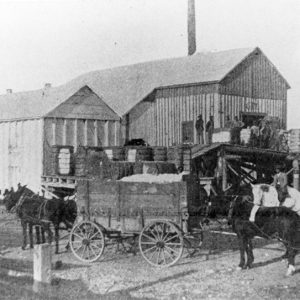calsfoundation@cals.org
Jericho (Crittenden County)
| Latitude and Longitude: | 35°17’09″N 090°13’37″W |
| Elevation: | 226 feet |
| Area: | 0.31 square miles (2020 Census) |
| Population: | 98 (2020 Census) |
| Incorporation Date: | June 10, 1986 |
Historical Population as per the U.S. Census:
|
1810 |
1820 |
1830 |
1840 |
1850 |
1860 |
1870 |
1880 |
1890 |
1900 |
|
– |
– |
– |
– |
– |
– |
– |
– |
– |
– |
|
1910 |
1920 |
1930 |
1940 |
1950 |
1960 |
1970 |
1980 |
1990 |
2000 |
|
– |
– |
– |
– |
– |
– |
– |
– |
210 |
184 |
|
2010 |
2020 |
|
|
|
|
|
|
|
|
|
119 |
98 |
|
|
|
|
|
|
|
|
Jericho is a town in Crittenden County. It is located on State Highway 77 a few miles north of Marion (Crittenden County) between Interstate 55 and the Mississippi River. Jericho’s population is largely African American.
Jericho was settled in the 1840s by riverboat captain Stephen Stonewall James and his brother John C. James, who built the first gin and sawmill in Jericho. They named the settlement for the city mentioned several times in the Bible. Other settlers joined the James brothers, establishing sawmills and planting orchards on their farms. One settler reportedly also operated a wine press.
During the 1880s, the St. Louis–San Francisco Railway (often called the Frisco) built rail lines through Crittenden County toward West Memphis (Crittenden County) and Memphis, Tennessee. The Frisco line ran through Jericho, where another line connected with the Frisco to carry logs from the diminishing forest. A post office was established at Jericho in 1886. A boardwalk east of the Frisco tracks led to Jericho’s main business establishment, a saloon with a gaming hall. Other stores were also built near the railroad. The Lake Grove Missionary Baptist Church was established in Jericho in 1890. It was joined in 1899 by an African Methodist Episcopal church. A Masonic lodge was also opened by African Americans.
After the beginning of the twentieth century, the white population of Jericho began to dwindle. In 1910, a black man, Steve Green, fled the state after killing his white employer near Jericho. He claimed self-defense. Green was later arrested in Chicago, but activists and lawyers successfully prevented his return to Arkansas due to fears of mob violence. A Church of God in Christ was formed in 1916, although it disbanded after a few years and then was reorganized in 1924. In the 1920s, Jericho was home to the East Arkansas Baptist Association Academy, one of the largest African-American schools in the area. In some years, more than 100 students were enrolled at the academy, many of whom boarded with local families. After the academy closed, a two-teacher public school was established; the school was later consolidated with Marion’s school district.
A Baptist church for whites was organized in 1938, but it disbanded after a few years. Fires in the 1930s and again in 1946 destroyed many of the stores in Jericho. The post office closed in 1943.
The town of Jericho was incorporated in 1986. A renovated cotton gin shed was converted into the town’s city hall, which was dedicated in 1990. The population of Jericho was 210 in 1990. By 2010, it had fallen to 119.
For additional information:
Whayne, Jeannie, and Willard B. Gatewood, eds. The Arkansas Delta: Land of Paradox. Fayetteville.: University of Arkansas Press, 1993.
Woolfolk, Margaret Elizabeth. A History of Crittenden County, Arkansas. Marion, AR: Southern Historical Press Inc., 1991.
Steven Teske
Butler Center for Arkansas Studies
 Crittenden County Map
Crittenden County Map  Jericho Gin
Jericho Gin 




Comments
No comments on this entry yet.